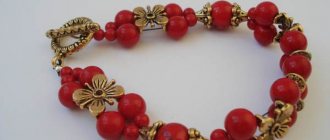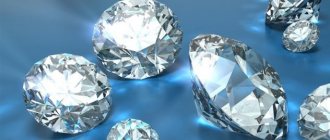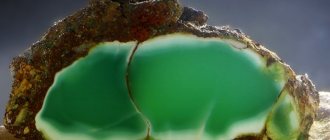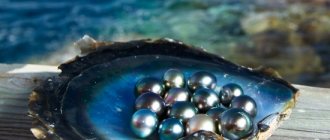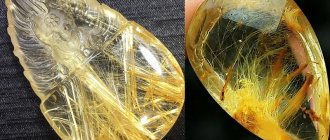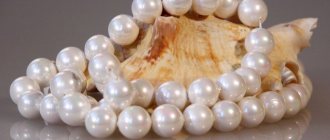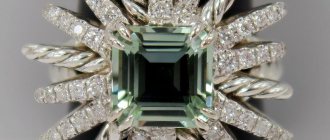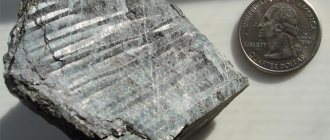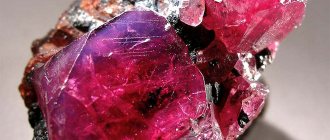A diamond is a diamond that has been processed by jewelers. The stone got its name from the French word “brilliant,” which means “brilliant, sparkling.” This is one of the most expensive gems in the world. Diamonds have become famous thanks to references in literature and art.
History and origin
It is believed that the first diamond was found six thousand years ago in India.
The locals valued the inconspicuous stone less than any other until they thought of processing it.
Then the jewelers of Amsterdam mastered the art. The first diamond was created by Louis de Bernel in the 15th century. The owner of the stone was the ruler of Burgundy, Duke Charles the Bold. At this time, the popularity of diamonds peaked: they charmed Charles’s favorite, Agnes Sorel.
Diamond
Since then, stones have been the best friends of girls (and rich men) all over the world. They were valued by Napoleon and Catherine the Great; one of the largest diamonds adorns the British crown. The Greek ἀδάμας means “indestructible.” There is no single version about the origin of the stone. The most popular: diamonds were formed due to the cooling of the earth’s mantle and brought to the surface by explosions.
To extract one carat (0.2 g) of diamond, it is necessary to process more than 250 tons of ore. It takes twice as much ore to extract a carat of diamond.
Part I
Shiny pebbles were found on the territory of modern India seven thousand years ago.
People were amazed by their brilliance, hardness, and sometimes transparency (it was a long time before the invention of glass). The name of the mineral comes from the ancient Greek “adamas” - indestructible. Since ancient times, diamonds - cut diamonds - have been a symbol of wealth and power; they were used to decorate scepters and crowns, statues and priestly robes.
In ancient times, incredible properties were attributed to diamonds; Pliny the Elder, who gave the first detailed description of a diamond, could not resist fantastical inventions. In his work “Natural History of Fossil Bodies,” he wrote that diamond neutralizes the effects of poison and frees people from empty fears.
There was also a belief that a diamond could be dissolved in fresh goat blood. It was believed that if you put a diamond crystal between a hammer and an anvil, the tools would most likely shatter into pieces, but the “king of stones” would remain indestructible. Such an illiterate test destroyed many good stones, because hardness and impact resistance are different properties.
Among all the diamonds found, and their total weight to date amounts to tens of tons, regular transparent and colorless polyhedrons are rare.
Most often, a large, irregularly shaped diamond is not much different from a cobblestone. This is exactly what the largest diamond ever found, the Cullinan, looked like.
It was discovered on January 26, 1905 in South Africa in the Premier mine and named after the company's president, Sir Thomas Cullinan. The fist-sized stone weighed more than 600 grams, and judging by its shape, it was once part of a larger formation.
When it was delivered to King Edward VII of Great Britain, he admitted: “If I had come across this stone, I would have contemptuously kicked it away . The Cullinan lived outside the mine for only three years - the miracle of nature was split and sawed to make 9 large diamonds and 95 smaller ones.
A rough diamond, even of the correct shape, really looks inconspicuous: just a very shiny piece of glass. Only cutting turns it into the “king of stones”. But this process is very difficult due to the hardness of the stone.
Mechanically, only another diamond can “take” it, and the processing can last for weeks and months.
Natural diamonds were probably first processed in ancient India. But they did it very primitively: until the 15th century, everything came down to light grinding and polishing of natural edges so that they would shine better.
In Europe, at the French and English courts, octahedral crystals were called diamond tips, and they actually sometimes resembled the tip of a spear. Imagine two small tetrahedral pyramids folded at their bases - this will be an octahedron .
FROM DIAMOND TO DIAMOND
Gradually, craftsmen learned to give diamonds different shapes, sometimes absolutely fantastic. But at first they had no idea what miracles were hidden in the stones - the beauty of a diamond is revealed only when cut correctly.
Slowly, over centuries, masters groped their way to learning how to reveal the unique properties of diamonds. Experience was accumulated in the processing of not so hard minerals - rubies, emeralds, topazes.
In the 13th-14th centuries, grinding mills appeared in Europe - large stone grinding discs rotated using a water drive. An important step forward was the use of the finest diamond powder for grinding. It was pressed into a metal disk to create a grinding wheel, and this made it possible to significantly increase labor productivity.
It is believed that the first diamond was made in Paris at the beginning of the 17th century. And for several decades the city remained the world's main diamond processing center. But, gradually, it lost the palm to Antwerp and Amsterdam.
In the mid-19th century, 540 steam-powered grinding machines were already operating in five workshops in Amsterdam.
In the 20th century, thousands of workers also cut diamonds at factories in Germany, and after the war - in Israel, India and (on a smaller scale) in the USA and South Africa.
However, to this day, jewelers have retained French terms: “pavilion” (French “tent”) - the lower part of the stone, “collet” (French “collar”) - the tip or small platform below; “facet” or “fatset” (French “edge”) - a beveled part of a sharp edge or edge; and the word “diamond” itself comes from the French “brilliant.”
Diamond cutting methods.
Diamond processing technology has a long history.
At the beginning of the 15th century, the production of so-called thick diamond tables began:
one of the vertices of the octahedron was cut off to form a wide square-shaped face and the opposite lower vertex, the tunic, was slightly blunted. Later they began to make “thin stones” - the two opposite vertices of the octahedron were severely sawed off.
But a real diamond was created from a diamond only when the craftsmen used facet cutting . It consisted of applying symmetrical small edges - facets - to the crystal.
Initially, eight facets were applied to the upper and lower parts of the “thick stone” (jewelers call this cut simple or ordinary ).
Further complication of the cut led to the application of additional 36 facets - 18 each on top and bottom. This is the so-called double cut , or “Mazarin cut” (named after Cardinal Jules Mazarin, who did not cut diamonds himself, but collected a rich collection and bequeathed it to the French crown).
Further - more: at the end of the 17th century, the triple “Peruzzi cut” (named after the Venetian Vincenzo Peruzzi) appeared - with 58 facets.
Physicochemical characteristics
Diamond raw material diamond is the hardest among natural and artificial materials. Strong refraction and dispersion create the signature brilliant shine and play of light, and impurities create color. Under normal conditions it can exist for a long time, in a vacuum, inert gas or at high temperatures it turns into graphite.
| Property | Description |
| Formula | C |
| Color | Colorless, yellow, brown, blue, light blue, green, red, pink, black. |
| Shine | Diamond |
| Transparency | Transparent |
| Hardness | 10 |
| Cleavage | Perfect by {111} |
| Kink | Conchoidal to splintery |
| Density | 3.47-3.55 g/cm³ |
Varieties and colors
The description of a diamond always contains a mention of color.
Classification by color
Diamonds are divided by color into white (colorless), black and fancy (colored).
White. In most cases, the color of diamonds is yellowish due to impurities. For a more accurate assessment, a scale for determining the color of diamonds has been developed: international according to GIA or Russian according to GOST R 52913–2008.
Black. Their peculiarity is a large number of graphite inclusions, which complicate the cutting and evaluation of the stone.
Fantasy. 9 basic colors are used: green, yellow, orange, pink, purple, red, brown, blue, gray. In the designation of color, the dominant one comes first; there are shades (indicated as a secondary color, in the second position). The second characteristic is saturation (intensity). Determined on a scale from 1 to 9 (from slight to strong fantasy).
Popular shades
Colorless. Classic, the most expensive type. The term “pure water diamond” means the highest quality of the stone: it is invisible in water.
Colorless diamond
Blue. The rarest expensive stone with greenish, purple, gray shades. The color of a diamond is created by aluminum impurities. Most salons offer blue artificial stone treated with radiation.
Blue diamond ring
Blue. An even rarer option, highly valued. The color is created by the presence of boron in the composition.
Blue diamond ring
Pink. These diamonds come in purple-pink, champagne pink and others (20 shades in total). It is considered fancy if there is no brownishness. The pink diamond is rare: one in a hundred thousand diamonds, the highest price category.
Ring with the largest pink diamond
Brown. The color comes from the iron in its composition. The cheapest of the fancy stones.
Brown Diamond
Yellow. More expensive than brown, but from the lower price category.
Yellow diamond ring
Green. Almost never found in nature. The color is created by chrome. The cost of 1 carat reaches 250 thousand dollars. Almost all samples are bought by museums or collectors.
Green diamond ring
Red. One of the most expensive (the price for 1 carat of such a diamond is more than 300 thousand rubles).
Red Diamond
Black. Opaque, completely absorbs light. But endowed with a diamond shine. Until recently, it was not considered precious. However, it is much less common than white ones and costs several times more than ordinary stones.
Black brilliant
Diamond. This is not a type of stone, but a tracing from English: “diamond” means “diamond”.
Over time, other types of cuts became widespread:
- many small triangular facets on an antique Indian rose,
- a full Dutch rose has 24 triangular facets;
- Half-Dutch has 16 facets,
- double Dutch has 36,
- the simpler Antwerp one has 12.
- The cross rose has a more complex cut: 16 of its 24 faces are quadrangular, the rest are triangular.
What all of the above “roses” have in common is a flat base, above which a shiny “tent” rises.
In the 19th century, the most common cut was the so-called old brilliant cut, which existed until 1910. It comes very close to what can be considered modern - it is also called a “full round diamond” .
In it, the angles between the facets are slightly changed, the thin girdle (girdle) separating the upper and lower parts of the stone is made perfectly round; the height of the upper part of the stone - the crown, on which there are at least 32 facets, has been reduced, while on the lower part - the pavilion - there should be at least 24 of them.
Artificial diamonds
The exorbitant price of processed diamonds is due to their beauty, rarity and strict rules of the game in the global diamond market.
Technology has created affordable options. Crystals are grown under conditions that replicate natural ones: high temperature and pressure or chemical vapor deposition. The formation features create a structure similar to natural stone.
The most beautiful and high-quality examples of artificial cultivation are cubic zirconia and moissanite.
cubic zirconia
The laboratory analogue is used in jewelry, science and industry.
Medicinal properties
Lithotherapists have discovered the healing properties of diamonds:
- treat mental problems: phobias, schizophrenia, depression, insomnia;
- relieve addictions: alcoholism, drug addiction;
- help with age-related problems: sclerosis, insanity;
- act as an antipyretic;
- neutralize stomach pains and poisons;
- heal lung diseases: inflammation, bronchitis;
- fight infections, hepatitis, joint diseases, kidney stones;
- used in dermatology.
Subtle but powerful energy affects internal organs, the brain, and blood vessels. Ayurveda claims that diamond inhibits the aging of the body.
Green diamonds are healers of female diseases, a talisman of motherhood, making it easy to get pregnant, carry and give birth.
The true color of diamond and energy radiation is blue. Fans of color therapy understand its meaning.
Nowadays, three very similar types of cuts are mainly used:
- The “American Diamond” was theoretically calculated by Marcel Tolkowsky in 1919, and this cut is adopted in the USA and Great Britain.
- The “Practical Diamond” by Werner Eppler was developed in 1939; the cut was adopted in Germany, Russia and the CIS countries. The name is due to the fact that in order to determine the optimal angles of inclination of the facets, instead of theoretical calculations, mass measurements were made of the most beautiful diamonds, made at different times by different masters and having the maximum play of light.
- The “Standard Scandinavian Diamond” , adopted in the Nordic countries, was developed in 1968. Its proportions and angles, like those of the Eppler diamond, are not calculated, but are found empirically, by measuring the most spectacular diamonds.
How different are these three types of cut?
The angles of inclination of the facets of the crown and pavilion relative to the upper platform (table) and the lower collar are:
- 34″25′ and 40°46′ for the Tolkowsky diamond;
- 33°12′ and 40°48′ for the Eppler diamond;
- 34°30′ and 40°45′ for a Scandinavian diamond.
To visualize such precision of installation of the grinding disk, we must take into account that for a circle with a diameter of 10 cm, the movement of the edge of the disk for 1 minute is 0.015 mm, 15 microns, a third of the thickness of a hair.
The cut depends on the optical properties of the diamond, specifically on the refractive index. And it depends on the impurities that are always present in a diamond; By the way, other properties, such as color and electrical conductivity, also depend on them.
The set of diamond samples that was used to determine the optimal cut (directly or through calculation of the average refractive index) varied among different authors. And so the results obtained were slightly different.
Magic properties
The brilliant gem has the same reputation: a powerful protector and patron. The stone shares energy with self-sufficient people, leaders in life.
Diamond stone
Are common
The most powerful diamonds are those that are inherited and become family jewels. The magical properties of such a stone will help solve any problems.
The mineral will bring a lot of useful things to its owner:
- gives fortitude and determination;
- protects from bad influences or habits;
- increases self-esteem;
- strengthens energy centers;
- protects against damage and the evil eye;
- makes you lucky, optimistic;
- reveals the strengths of the individual.
It is easier to establish a connection between a person and a gifted stone.
Rules for ladies
For women, this mineral is of particular importance and requires them to follow certain rules:
- it is undesirable for even a business woman to buy it personally - a man (any man) must pay for the jewelry and put it on the mistress;
- For ladies who dream of getting married, the stone will interfere with their personal life;
- a diamond is purchased while already married to the man you love; It will protect spouses from infidelity or divorce.
You need to be prepared for the fact that the magic of the stone will awaken “lordly habits” in the owner.
Jewelry with diamond
Cautions
The magical properties of a diamond purchased in person are activated only after seven years (as residents of Asia believe).
A gem associated with the Cosmos serves the owner with a pure soul; he can punish the rude or evil. A diamond, like no other stone, has a dark trail behind it: people would commit any crime for it. Therefore, if a stone (especially one with cracks) is stolen or the previous owner is killed, the new owner will not be happy.
Color Specialization
Colored stones have their own magical qualities:
- blue - useful for people who know how to listen to the body and improve its functioning; symbol of devotion;
- pink is the embodiment of femininity;
- yellow is an attribute of believers, not recommended for atheists;
- red - cleanses the spirit.
The magical properties of any diamonds enhance the feeling of happiness, so it is better to purchase them when “life is good.”
Properties and uses of diamonds
In terms of physical properties, diamonds are identical to diamonds. In terms of beauty, a diamond is significantly superior to a natural diamond crystal. Processed stones are used only for decorative purposes - making jewelry and souvenirs.
Some people attribute magical and healing properties to diamonds. Therefore, the jewel is used for healing and performing magical rituals.
Physical properties
A diamond, like a diamond, is made up of carbon atoms. The chemical formula is C. The atoms are arranged in a strict order, forming cubes.
Diamond density is 3.47-4.55 grams per cubic centimeter. The hardness is 10 on the Mohs scale - it is the hardest substance. At the same time, it is quite fragile and can be broken by hitting it hard with a heavy object.
The diamond has absolute transparency. The refractive index is 2.4.
The melting point under normal conditions is 4000 degrees. In a vacuum, a diamond burns at 700-900 degrees.
Medicinal properties
Diamond is actively used in lithotherapy. This is a branch of medicine that uses stones for treatment. Lithotherapists believe that the jewel has the following healing properties:
- reduction of headaches;
- increased mood;
- improving sleep quality, eliminating insomnia and nightmares;
- strengthening the heart muscle, normalizing blood pressure;
- improving the condition of skin, hair and nails.
To reveal the healing properties, experts recommend wearing the stone on your left hand or in the heart area. It is beneficial to drink the water in which the diamond was lying.
Magic properties
Diamond is the king of all precious stones. Therefore, it must belong to a strong and powerful person. The magical properties of diamonds have been known for a long time.
Sorcerers and mediums endow a diamond with the following qualities:
- the stone brings good luck to warriors and protects them from death in battle;
- enhances human energy, not only positive, but also negative;
- strengthens the health of the owner;
- improves communication skills;
- adds charm to the owner.
Diamond is a symbol of love. The custom of giving a girl a diamond ring as a sign of engagement is based on the stone’s ability to protect the owner from evil intentions towards him.
The magical properties of diamonds are most evident if the owner has pure and good thoughts. If a person is planning evil, his plans will be upset and turn against him.
Who is the stone suitable for according to their zodiac sign and name?
In astrology, diamond is associated with the Sun. Therefore, the stone is suitable for all zodiac signs, but some nuances should be taken into account.
Table of compatibility of the stone with the signs of the Zodiac.
| Sign | Peculiarities |
| Aries, Sagittarius, Leo | They perceive the energy of the stone better than other signs and use it for their own purposes. |
| Libra, Aquarius | Jewelry helps these signs cope with shortcomings and gain self-confidence |
| Capricorn | For Capricorn, a white or blue diamond is suitable, which will help achieve their desired goals |
| Cancer, Pisces | Will help organize thoughts and give vital activity |
| Taurus | Taurus needs a black diamond, it will give self-confidence |
| Twins | Green diamond will improve health and help you gain wealth |
| Virgo, Scorpio | A stone of any color except black will bring good luck in life. |
The diamond is suitable for owners of strong names - Alexander, Victor, Konstantin, Anna, Maria, Margarita. For such people, the jewel will bring success in their career and personal life.
Who is suitable according to their zodiac sign?
The diamond suits the zodiac sign of Aries, Libra and Leo. From an astrological point of view, their energy is consonant with the vibrations of the stone. The gem can suppress the soft character of Pisces.
Diamond “Heart of the Ocean”
According to the horoscope, it will also suit other signs, the main thing is to establish personal contact with the stone.
| Zodiac sign | Compatibility (“+++” – fits perfectly, “+” – can be worn, “-” – strictly contraindicated) |
| Aries | +++ |
| Taurus | + |
| Twins | + |
| Cancer | + |
| a lion | + |
| Virgo | + |
| Scales | +++ |
| Scorpion | + |
| Sagittarius | + |
| Capricorn | + |
| Aquarius | + |
| Fish | + |
(“+++” – fits perfectly, “+” – can be worn, “-” – is strictly contraindicated)
Quality of cut.
“How to determine the quality of a cut”?
The answer to this question is given by the accompanying document. All important cutting elements such as geometry, symmetry and polishing are assessed technically. Based on this assessment, a document is drawn up in which the stone is assigned to a quality group. Group “A” is the highest quality diamond group. It meets all technical requirements and ideal cut proportions. Groups “B”, “C” and “D” have lower processing quality, respectively.
Where is it used?
The number one gem is used in two areas: jewelry and investment.
Investments
Diamond stone is a reliable means of preserving capital.
It is profitable to invest in high quality copies sold separately.
The most popular is 1 carat. It is considered large, reaching a diameter of 6.5 mm. Even diamonds of average quality do not cost less than several thousand, with the highest characteristics - $300 thousand per carat. For specimens larger than 0.3 carats, a GIA (Gemological Institute of America) certificate is issued.
Stones in jewelry are considered personal use and depreciate over time; these are only luxury accessories. For them there is a price for primary purchase and secondary sale (20–40% of store prices and 60–80% of company prices).
The main price guide is Rapaport's price list, which is updated and published in New York. It does not display the price of diamonds, but the opinion of experts from the Rapaport Corporation. It guides dealers and all interested parties.
Jewelry
The stones are framed in platinum and white gold. In red they appear yellowish. The yellow gold setting hides flaws in the gem (air bubbles and dirt). Silver jewelry with diamonds requires special care: the metal becomes dull when it comes into contact with the gem.
Stones with which diamonds are combined in jewelry: garnet, cultured pearls, amethyst, sapphire.
Rule 4C
The price is determined by four characteristics of diamonds (4C rule): cut, clarity, color, and carat weight.
Weight. As the weight increases, the price per carat does not increase in direct proportion: up to 2 carats - by percentage, from 2 carats - in geometric progression.
Diamonds are valued using the “Tavernier Rule”: (carat weight)2 x (carat value) = price of the stone. The rule applies up to five carats: a 10-carat specimen is a hundred times more expensive than a 1-carat specimen.
Cut. It is she who makes a diamond a diamond. Only a diamond cut of 57 facets is acceptable: 24 in the pavilion area, the rest on the crown. The stone can be processed with a classic round, oval, or other cut. Round ones are classified into groups A and B. A - ideal proportions and squares forming a platform. B - stones are elongated in width or height, symmetry is broken.
The type of cut has little effect on the price.
Purity. The fewer inclusions and the smaller they are, the better. At the first levels of gradation, the price increases sharply, for higher indicators - less.
Color. The richer the better. The price is growing exponentially, but visually the gradation of colors is indistinguishable.
A colorless or blue diamond is expensive (from $24,750 per carat), while a brown or yellow one is cheap (up to $1,100).
Other options. The price is influenced by the types of inclusions, the quality of polishing, the symmetry of the crystal, and fluorescence.
What is the difference between a diamond and a diamond?
- Mass. After processing and cutting, the diamond becomes smaller than a diamond for obvious reasons. Weight loss is directly related to the type of cut.
- At a price. Rough diamonds are now freely available and are much cheaper than diamonds. But you need to buy them only from companies that have permission (license) to do so. In addition, the diamond will still have to be taken to the jeweler, and this is also an expense.
- The presence of a cut. Diamonds don't have it. It is extremely rare to see them in their pure form. Diamonds, after cutting, are used for jewelry. Only a professional can distinguish a fake from a natural stone, so you need to buy a diamond in trusted places.
How to spot a fake
For most people, buying a diamond is a once-in-a-lifetime event. To avoid getting into trouble, consider the following points. Stones are always supplied with a certificate: GIA (reference), other organizations or independent licensed appraisers. Diamonds are not “packaged” in cheap metal; the inside of the ring or earring must be marked - Plat or PT (platinum), 18K, 14K or 10K (gold carat). The mark CZ (cubic zirconia) stands for cubic zirconia.
The stone can be checked at home or in a store:
- breathe on it: the real one will not fog up, condensation may appear on the fake;
- examine under a magnifying glass: artificial gems are flawlessly smooth, without inclusions or color changes.
There are inclusions inside the diamond, but there are no bubbles.
- put a pebble on a newspaper: if the text is readable through it and the paper is visible, this is an imitation;
- put in a glass: diamonds sink, fakes float;
- put on the ring and look closely at the diamond: your finger will not be visible;
- the diamond is cool even in the heat;
- natural stone, oiled, sticks to the glass;
- oil touch: crushed on cubic zirconia, then collected in droplets;
- check with hydrochloric acid: it will leave stains on the cubic zirconia, but will not damage the natural stone.
All diamonds glow under X-rays and ultraviolet light.
Substitutes such as sapphire or artificial spinel can be distinguished from the stone by glycerin, methylene iodide or water: only the diamond will sparkle in them. Professionals evaluate stones using diamond testers - devices that identify samples by the speed of light transmission and similar indicators.
Diamond Processing Methods
The question of how diamonds are made has two answers: manually and using a laser.
How to make a diamond from a diamond by hand:
- Splitting. Following the lines that were made by the specialist during the inspection, small cuts are made on the stone placed in the holder with the same mineral. Afterwards a split occurs with a blow.
- Sawing. At this stage, the stone is attached using limestone or gypsum to a copper head, which is clamped in a special cutting tool. For cutting, a thin disc is used, lubricated with oil mixed with diamond powder. The process speed is approximately 1 mm/hour.
- Adding roundness. The mineral becomes round, making it look like a diamond. Processing is carried out using another stone.
- Cut. The crystal is fixed in the grip of the grinding machine, the quadrant, so that a precise angle is obtained in relation to the grinding disc for applying the bevels. The discs, usually steel, are lubricated with a special paste or oil mixed with diamond powder.
Technologies are constantly improving, new ones are replacing old ones. This is why some diamonds are laser cut.
When choosing this method, each stage of the formation of the future diamond occurs using laser systems. A crystal classified as jewelry is assessed by a specialist who determines the processing method. The cutting lines are drawn using a laser. Then comes the turn of cutting and cutting, naturally, with a laser.
Laser processing allows you to give stones the desired shape without taking into account their direction when fixing. The negative point is significant loss of diamond mass, which does not happen when processing manually. About the weight of a diamond →
Despite the attempt to make working with precious stones easier, only a talented craftsman can create a masterpiece from them, and only with his own hands. Usually several people work with one stone at once. Each of them is involved in a certain stage, and the two of them work together to shape the diamond.
How to wear and care
An aristocrat pebble demands and deserves appropriate treatment.
White gold necklace with diamonds
Jewelry is not worn at home, especially when cooking, cleaning and similar activities.
Diamonds should not be worn in the solarium or on the beach.
This is an evening stone: during the day it shines less and does not tolerate heat well.
Cleaning
Diamond jewelry is cleaned with a soft cloth moistened with soapy water. You need baby soap or soft soap; laundry soap will take away the shine.
- Alcohol is suitable for cleaning: vodka, ammonia or the like. The product is immersed in it and the coating is removed with cotton wool.
- The gem does not tolerate soda, potassium permanganate, iodine, vinegar, bleach, hydrogen peroxide.
- Contacts with cosmetics and water are contraindicated, as they will coat the stone with hard-to-remove grease.
- Denatured alcohol will return the shine to gold.
When cleaning diamonds, wear rubber gloves to avoid any grease from your fingers. A jeweler carries out thorough or ultrasonic cleaning after assessing the condition of the stone (sometimes this is impossible).
A gem dropped on the floor or overheated may crack or break.
Store minerals in a box, preferably made of natural stone. If there are a lot of decorations, a velvet bag is allocated for each.
How to wear jewelry
Diamond is an evening stone; daytime fuss is not for it. These decorations are not worn all together: they look like rhinestones or jewelry. A two-piece set is optimal. Perhaps more if the jewelry is located at a distance from each other: ring, earrings, brooch.
Ring. Thin wedding rings are placed on the ring finger, while others with a large stone are placed on the index finger. Two rings or more at the same time is in bad taste.
A ring with a diamond
The ratio of dimensions is taken into account: a massive product with a large stone on graceful fingers does not look very beautiful.
Earrings. The rules are general for gemstones: any option is suitable for tall ladies with a swan neck, including long pendants. A lady with appetizing curves and a short neck will be adorned with large stud earrings with diamonds.
Stud earrings with diamonds
Brooch. The massive product is fixed in the gate area. Graceful brooches in the form of flowers, butterflies, and abstractions are placed on the left chest, 10–12 cm below the shoulder.
Pendants and pendants. Suitable for a monochrome dress without bright accessories.
Bracelet. Usually worn loosely at the wrist. With large stones in the center - higher and tighter.
Necklace. Goes better with a deep neckline. To match the diamonds, choose a plain dress, preferably a black one without fasteners. If they are, they are not near the decoration. Diamond accessories do not like colorful, simple, knitted, sports, outerwear. The fewer stones in the outfit, the more aristocratic the hostess looks.
Large stones are a good investment, but smaller ones are suitable for decoration. Even young people can wear diamonds: it was not for nothing that the brilliant Marilyn Monroe defined them as a girl’s best friend.
Stone jewelry
Women are not recommended to purchase diamond jewelry on their own. A diamond should be a gift from a man, only then will it fully reveal its characteristics.
Diamond settings are selected depending on the color of the crystal. White diamond is suitable for any metal - gold, silver, platinum. Black - only platinum. Reds and purples look good in white gold, while browns look good in yellow.
Diamond jewelry must be properly cared for to ensure it retains its beauty for a long time. Rules of care include:
- wear jewelry so that it does not come into contact with cosmetics and chemicals;
- You cannot wear jewelry in a bathhouse, sauna, or solarium—the heat will cause a white coating to form on the diamond;
- store diamond jewelry separately from others;
- Clean the diamond with a soft cloth moistened with soapy water.
It is recommended to have it professionally cleaned by a jeweler once a year.
Diamond jewelry is only suitable for special occasions. They are rarely worn to work or to university - during the day the shine of the diamond is lost; it best reveals its beauty in electric light or candles. For everyday wear, a modest ring or stud earrings with small crystals are suitable. Large jewelry and sets should be worn with evening dresses in a formal setting.
Even modest jewelry should be worn with formal clothing. An office suit is best. Diamond jewelry does not harmonize with jeans and T-shirts. To go out to a restaurant, you should choose a plain dress or suit, without sequins or sparkles.
View this post on Instagram
Posted by Diamonds from 585 Gold (@585_diamonds) Jun 5, 2019 at 9:00 am PDT
View this post on Instagram
Posted by Jewelry Atelier (@lance.jewels) Jun 5, 2022 at 8:03 am PDT
View this post on Instagram
Publication from ZODIAC? Jewelry salon-shop (@zoloto_zodiak_shop) November 7, 2022 at 3:39 PST
Additionally, read the article about an interesting option for placing a stone in jewelry: a dancing diamond.
To watch the video, a commentary from a famous fashion critic about diamonds, who to wear and which ones to buy:

